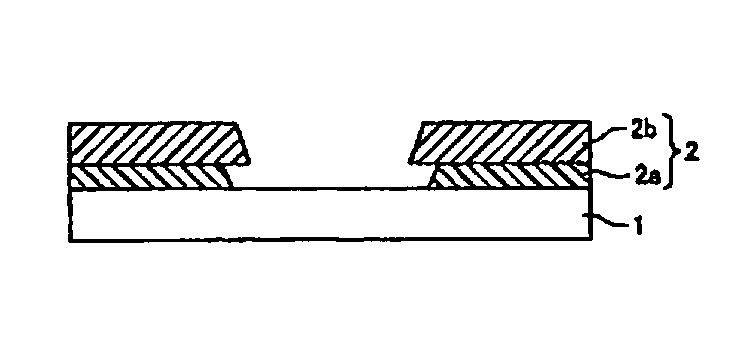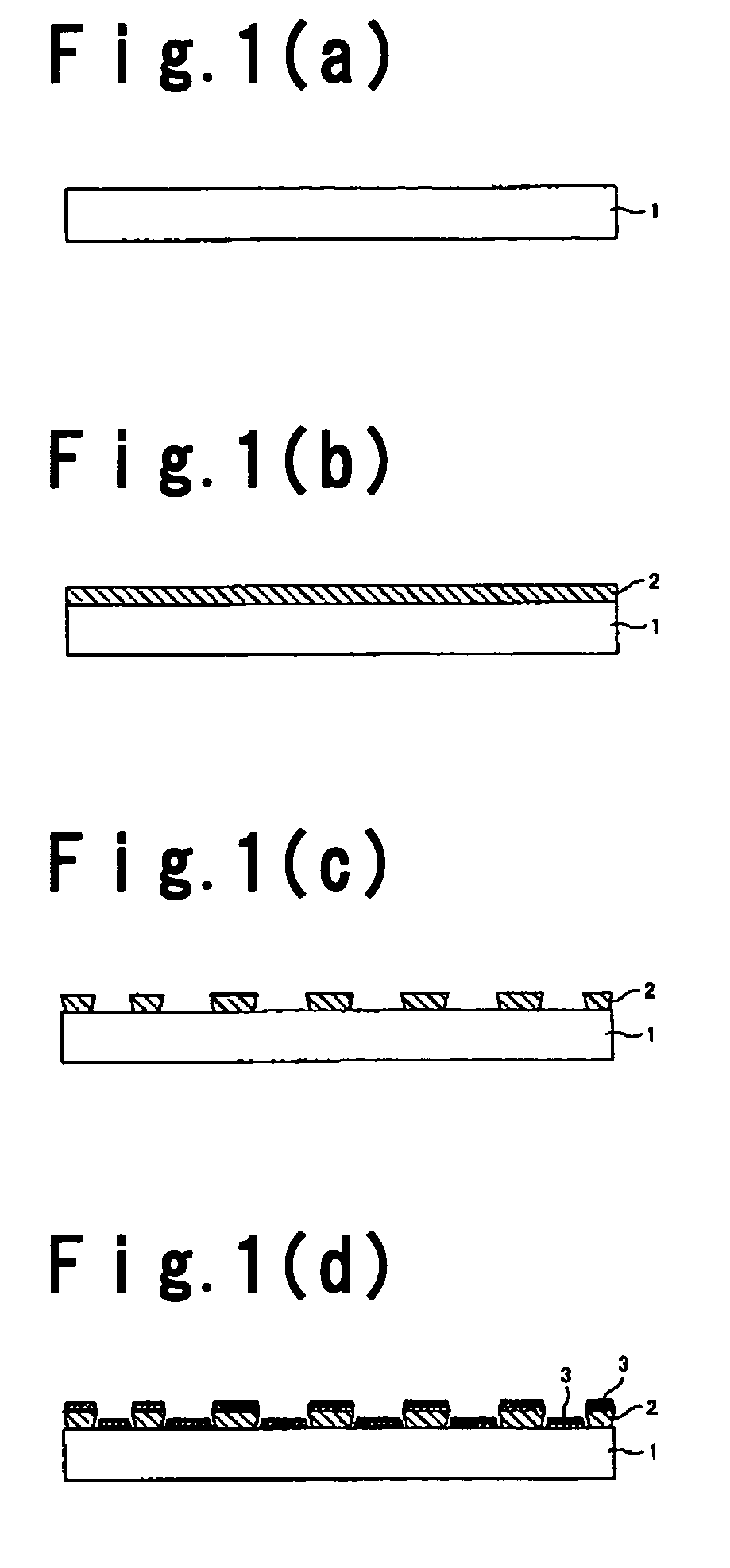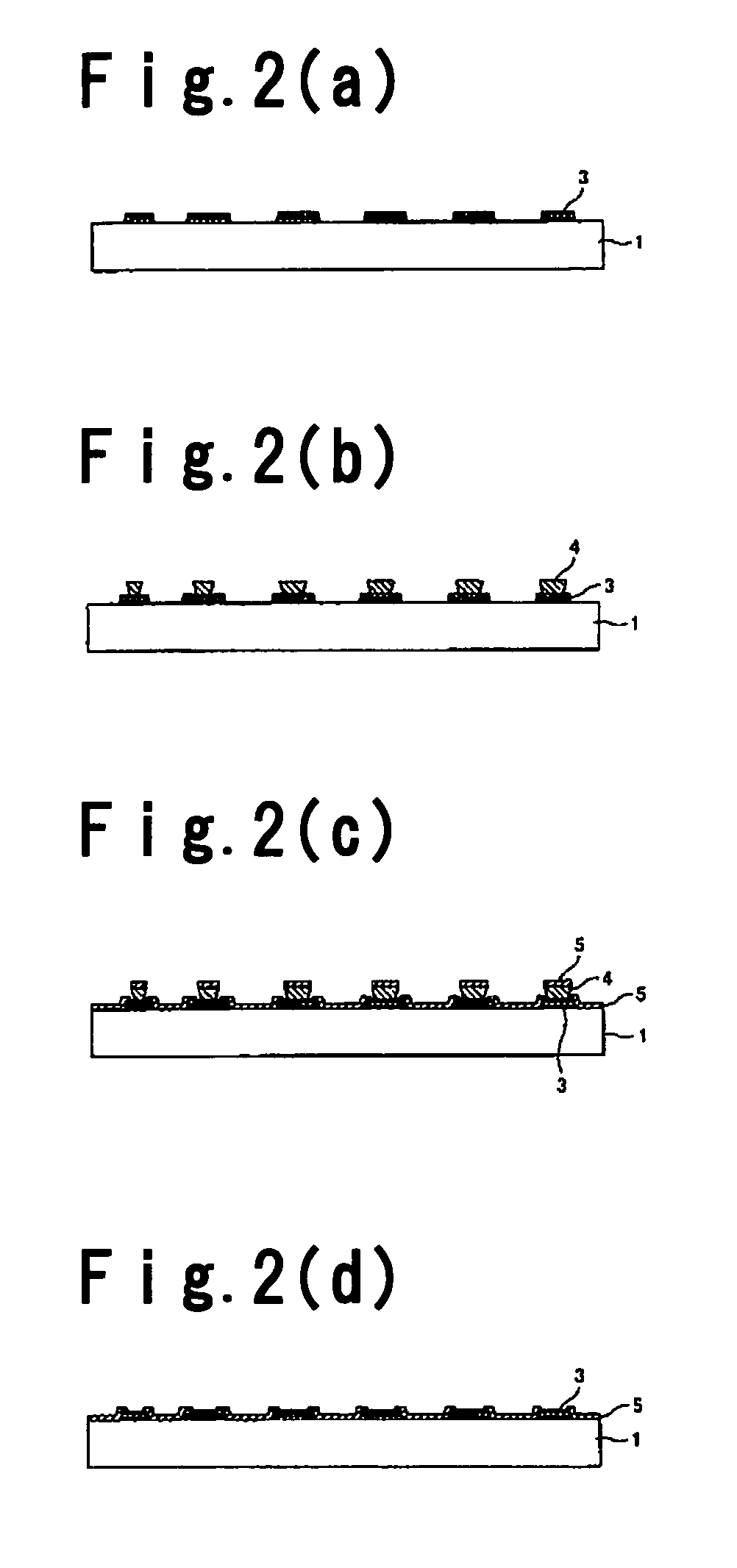Pattern formation method, electronic circuit manufactured by the same, and electronic device using the same
a technology of electronic circuits and patterns, applied in the field of methods for forming patterns and electronic circuits, can solve the problems of high environmental burden, high production cost, and high production cost, and achieve the effects of reducing the number of steps, reducing the cost and environmental burden, and improving throughpu
- Summary
- Abstract
- Description
- Claims
- Application Information
AI Technical Summary
Benefits of technology
Problems solved by technology
Method used
Image
Examples
example 1
[0158]In this example, explanation will be made, based on FIG. 6 through FIG. 10, about a case which is suited for a process for using a thin film to form electrodes and wires in order to fabricate a high density of electronic circuit module with LSI (Large-Scale Integration) circuits mounted in a high density thereon. FIG. 6 is a cross-sectional view showing a portion of a thin film circuit pattern with two LSI circuits mounted thereon. As shown in FIG. 6, a glass substrate 6 has electrodes 9 and a wiring pattern 10 formed thereon, the electrodes being connected, through a coupling agent 8, to LSI circuits 7 having twelve terminals, and the wiring pattern making connection between the electrodes 9. FIG. 7 is a plan view partly showing the electrodes 9 and the wiring pattern 10 before mounting of the two LSI circuits 7. FIG. 6 is a cross-sectional view taken along the line A-A′ of FIG. 7, looking in the direction of the arrows. FIG. 8 is a plan view showing a state wherein the wirin...
example 2
[0163]Now, the pattern forming method according to a second example will be described, based on FIG. 11 through FIG. 14, about a plasma display (hereinbelow, referred to as “PDP”), which is a typical flat panel display. FIG. 11 shows a representative electrode wiring pattern, which is formed on a surface of a glass substrate 20 as the screen side of a PDP. FIG. 12 is an enlarged view of a portion encircled by the dotted circle 21 in FIG. 11. The electrodes have a typical structure wherein transparent electrodes 22 made of ITO, SnO2 or the like are integrally combined with bus electrodes 23 made of a combination of Cr / Cu / Cr, Cr / Al / Cr or the like and serving as power feeding lines, forming many linear patterns so as to correspond to the number of pixels. In the electrode wiring pattern in this example shown in FIG. 13 and FIG. 14, a pair of a transparent electrode layer 22 and a bus electrode layer 23 is formed, and each of the layers may be fabricated by substantially the same proces...
example 3
[0169]The pattern forming method according to another example will be described, based on FIG. 9 through FIG. 14, about a PDP as a typical flat panel display.
[0170]FIG. 11 is a plan view showing a schematic structure of a thin film circuit pattern (electrode wiring pattern), which is formed on a surface of a glass substrate 20 as the screen side of a PDP. FIG. 12 is a plan view of a portion encircled by the dotted circle 21 in FIG. 11.
[0171]The electrode wiring pattern of this example is configured so that a pair of a transparent electrode layer 22 and a bus electrode layer 23 is formed as shown in FIG. 13 or FIG. 14 (each being a cross-sectional view showing a schematic structure of a thin film circuit pattern in Example 3), more specifically, transparent electrodes (thin-film layer) 22 made of ITO are integrally combined with bus electrodes (thin-film layer) 23 made of a combination of Cr / Cu / Cr and serving as power feeding lines, forming many linear patterns so as to correspond to...
PUM
 Login to View More
Login to View More Abstract
Description
Claims
Application Information
 Login to View More
Login to View More - R&D
- Intellectual Property
- Life Sciences
- Materials
- Tech Scout
- Unparalleled Data Quality
- Higher Quality Content
- 60% Fewer Hallucinations
Browse by: Latest US Patents, China's latest patents, Technical Efficacy Thesaurus, Application Domain, Technology Topic, Popular Technical Reports.
© 2025 PatSnap. All rights reserved.Legal|Privacy policy|Modern Slavery Act Transparency Statement|Sitemap|About US| Contact US: help@patsnap.com



